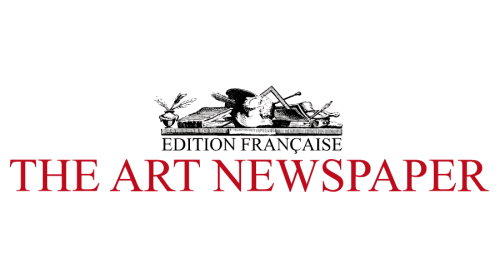
In her series Graft, Edra Soto has been mining visual iconography from her upbringing in Puerto Rico, namely the wrought iron fences (rejas) and breeze blocks (quiebrasoles) that are ubiquitous in the island’s residential architecture and were prominent features of Soto’s childhood home.
In recontextualising these domestic motifs within public sculpture, she asserts that a typically overlooked visual language is worthy of our attention while carrying out an intimate play of public and private, placing elements of her life and memory into communal settings to be engaged with by viewers, as if she were welcoming us into her home. The latest iteration of Soto’s Graft series, through a Public Art Fund commission, goes on view at the south-east corner of Central Park this month.
The Art Newspaper: What does this series’ title, Graft, mean to you?
Edra Soto: These were my first works to represent migration, and the literal meaning of “graft” is a skin transplant. I kept thinking about these decorative motifs that are emblematic of the residential architecture of Puerto Rico. I started thinking about the motifs as a way of representing myself and I think of them as my skin. I think of them also as a way of inhabiting a space, how I comport myself in a foreign space and make it feel familiar to people as they visit.
I grew up in a home that was built in the 1950s and 60s, and it was the style of home that I’m representing in this work. These homes had decorative wrought iron fences and breeze blocks that could be either inside or outside; these were the main components of the lower- and middle-class residences in Puerto Rico.
My childhood home had breeze blocks in the living room that were over 30ft wide, and because they faced directly into the neighbours’ house, my parents covered the back of them with an acrylic panel for privacy, which created very intense contrasting patterns of light and shadow. When I was thinking about how to represent my migration, I kept thinking about these motifs and patterns.
How do you think about this dance between public and private, where you are incorporating iconography from your childhood into public sculptures?
I remember doing one at the DePaul Art Museum [in Chicago] that was over 14ft tall and installed right in the main entrance window of the museum, and a curator visited the exhibition and asked me where the work was, and it was right in front of him. I remember thinking that this was exactly how these motifs behave in our society; they are a part of the backdrops of our households. If you think about it in terms of the poetry, that state of being both visible and invisible could be a reflection of how we exist, and our position in the world. But my reality as an artist is that I want to create work that people engage with, so for me to express that idea I had to explore different entry points.
If you’re thinking about migration and your sense of belonging in a space—to be convincing about belonging—it requires a lot of meditation on how to make that type of transformation, and I have to consider the site where each project will be living. In the case of Central Park, the plaza is at a prominent entrance where there is a coalition of all types of people and things happening; it’s quite amazing.
I decided to create a standing sculpture that looks like a house façade, but it’s a standing structure with two sides, the front and back views, and the back will have tables and seating to encourage people to sit and hang out. My idea was to create the illusion that, when seen from one angle, it looks as if there is a house full of people.
You’ve been working on the Graft series since 2013. How has it evolved in that time?
Each iteration takes a very different direction. As I get older, my relationship with Puerto Rico has changed and transformed; as my family ages, the relationships that have been my anchor to Puerto Rico have influenced and affected how I express my migration. When we talk about migration, we talk about the geographic relationship between places, but this is intrinsically related to the personal relationships of the people in those places. So as I experience the different parts of life, such as the end of life for my parents, it has transformed my body of work and led me to reflect on the different things that impacted my upbringing, how those things relate to the residential architecture that I represent, and how I can narrate these stories through my work. This is the body of work that I’ve held onto the longest, and it continues to hold my attention.